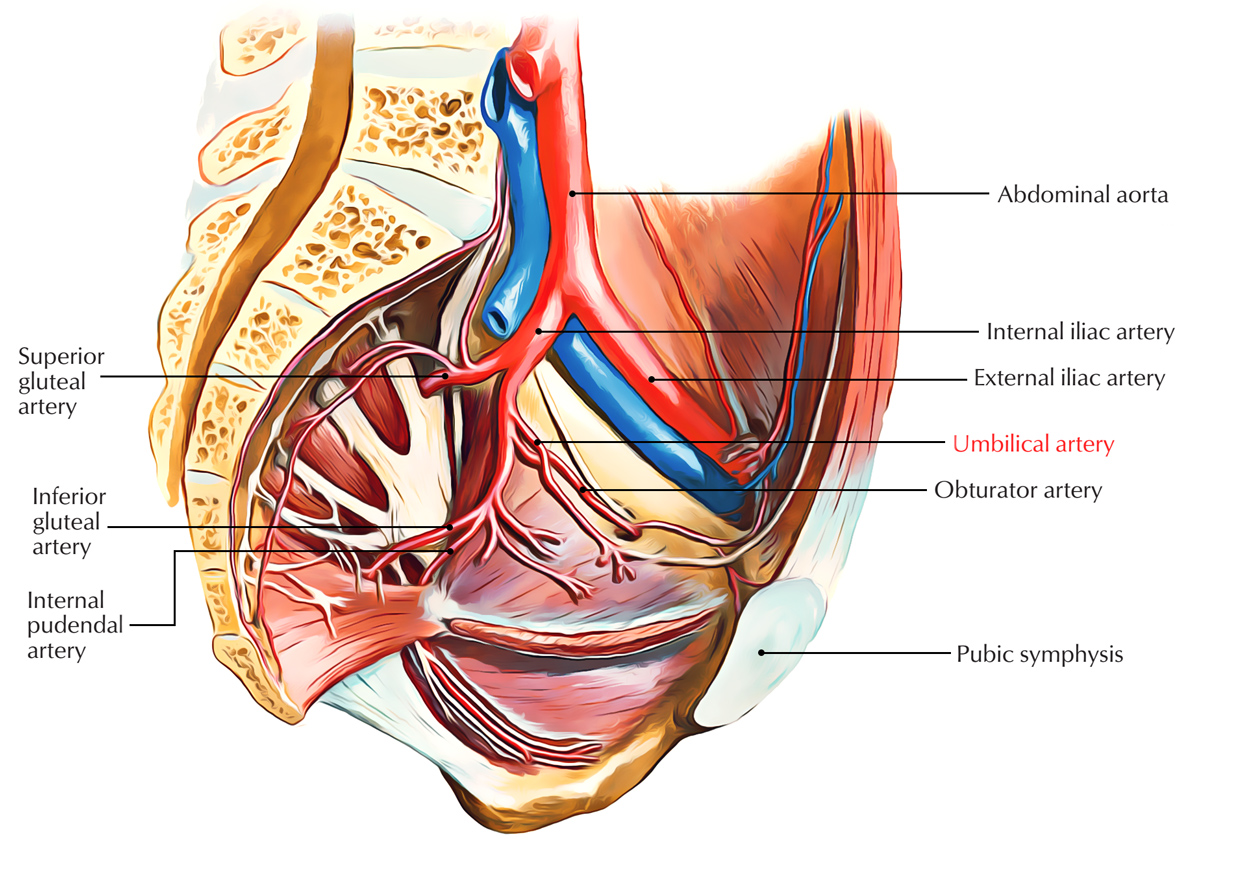In basic terms, the umbilical cord is an evolving fetus’s lifeline. It is a versatile, tube-like construct which links a fetus to the mother’s placenta. The placenta is an organ connected to the uterine wall which, in turn, links to the mother’s blood supply.

Umbilical Artery
Origin
The umbilical artery stems via the anterior branch of the internal iliac artery. In the fetus, it travels inside the umbilical cord to the placenta as well as therefore is the connection to the maternal circulation.
The umbilical artery brings deoxygenated blood and waste items via the fetus to the placenta. When the infant is born, the umbilical cord is cut near to the infant’s body, and the stump falls off by itself. The umbilical cord brings oxygenated blood as well as nutrients via the placenta to the fetus via the abdomen, where the navel develops.
Structure & Function
The umbilical cord kinds around the fifth week of pregnancy and also can mature to 20 inches long at full-term. It is a hard, powerful structure along with two primary layers: an outer layer of smooth muscle and an inner layer consisting of a gelatinous fluid referred to as Wharton’s jelly. There are generally three vessels inside this compound: one vein and two arteries. The vein brings oxygen and nutrient-rich blood via the placenta to the fetus, and the arteries bring deoxygenated and nutrient-depleted blood far from the fetus.
Insertions
The umbilical cord goes into the fetus via the abdomen and develops into two branches: one accompanies the hepatic portal vein in the liver, as well as the other links to the heart via the inferior vena cava. These particular two branches form a circuit in the fetus’s body and also reconnect to the umbilical cord exterior. In uncommon cases, the umbilical cord might not establish properly, or some other issue happens throughout birth. In some cases these particular issues can be identified by means of ultrasound prior to birth, however oftentimes, they are not observed till after the infant is born. Let’s take a look at a few of these particular prospective concerns and how they can impact the infant.

 (47 votes, average: 4.73 out of 5)
(47 votes, average: 4.73 out of 5)